As an Amazon Associate I earn from qualifying purchases.
Polska kielbasa is one of the baseline sausages that everyone learns when you are developing your skills as a sausage maker. It’s is such an icon, done in so many ways, that I am sure someone somewhere will criticize my recipe.
Let them. I like my kielbasa recipe, and it is reasonably close to the Official Recipe. You heard right: There is actually an “official,” Polska kielbasa recipe endorsed by the Polish government. Kinda hilarious, if you think about it. Not sure that’s an area where the government needs to get itself involved, but that’s just me.
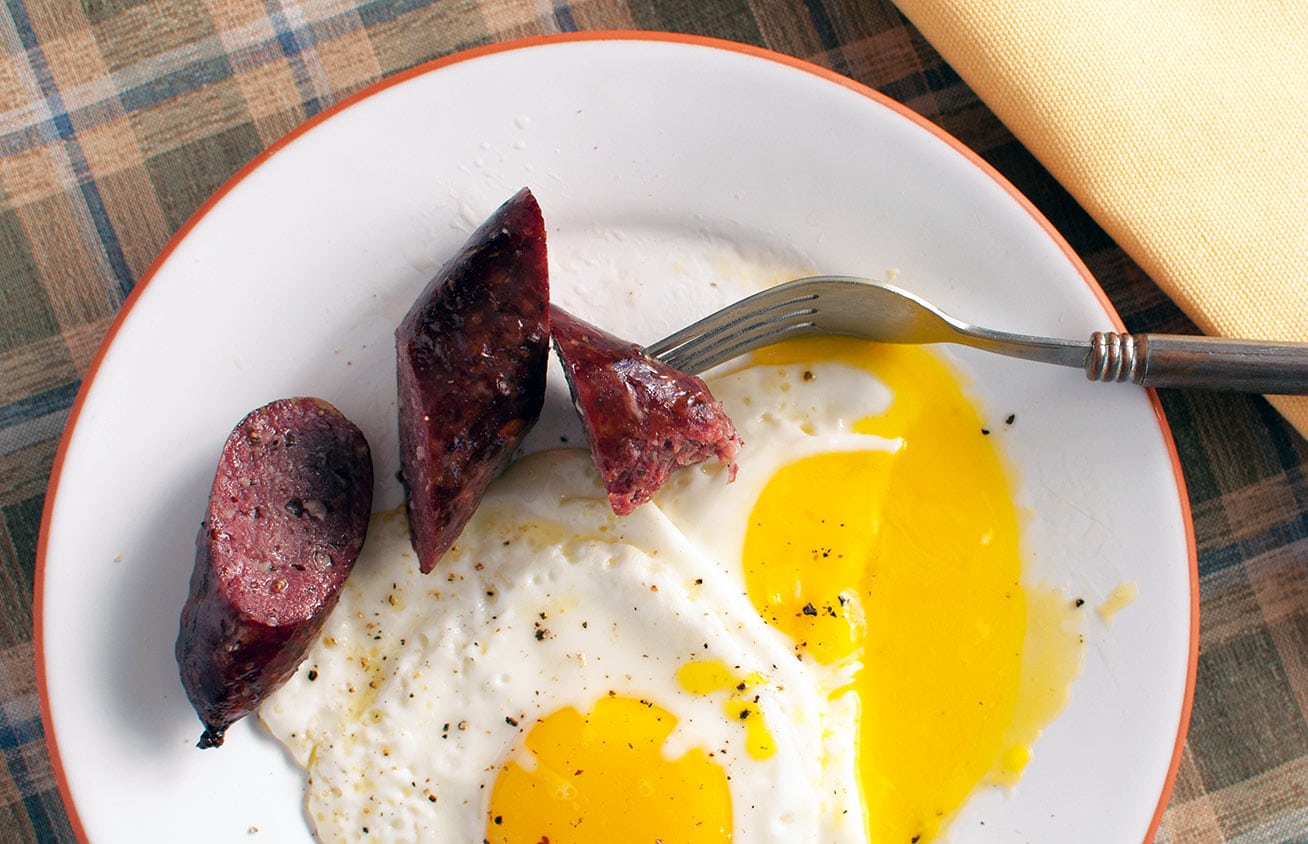
You should know that “kielbasa” simply means “sausage” in Polish. So if you were to find yourself in a real-deal Polish butcher shop and ask for some kielbasa, they’ll ask what kind.
What we generally call kielbasa here in the United States is Polska kielbasa wedzona in Poland. Incidentally, I am prone to pronouncing it “keel-BAH-see” because I am from New Jersey — you’ll hear this pronunciation all over the Mid-Atlantic region.
Everyone has his or her own kielbasa recipe. Let me restate that one more time. But there are a few things that distinguish real(ish) Polska kielbasa from the overly weird variants. I owe much of this information to the Marianski brothers, whose book Home Production of Quality Meats and Sausages is indispensable for any serious home sausage maker.
- First, kielbasa in America is almost always smoked, unless you are in a real-deal Polish deli, in which case there are all sorts of variants on the smoked kind. Fresh, unsmoked kielbasa is usually only found in a Polish meat market.
- Second, it is normally pork-based, often with a little beef tossed in. (My versions often use wild boar or black bear.)
- For the typical American version, it always includes Cure No. 1 (sodium nitrite), which gives it the pretty pink color — any “uncured” kielbasa you see that’s pink is a lie: They are using celery juice, which has as much sodium nitrite as the powder.
- Garlic is the main player. Marjoram is often there, but not always.
- No paprika! Adding paprika to a kielbasa turns it into a Hungarian sausage, which is awesome, but not kielbasa. You get the red color from the nitrite and the slow smoke.
If this seems overly controlling, it’s only meant to get you in the right ballpark. Similarly, a sweet Italian sausage would be weird without fennel seeds — or with chile flakes — and a bratwurst just wouldn’t be right without the nutmeg.
Making this sausage isn’t difficult if you have made smoked sausages before. If you haven’t, I highly recommend you review my tutorial on basic sausage-making.
There is one wrinkle to my version of kielbasa, though. I sorta-kinda age it by letting the smoked links hang in my curing chamber (55°F at 70 percent humidity) for 2 to 4 days before I eat them. This dries them out just a little, and I think it improves the flavor a lot.
How to eat Polska kielbasa? Well, in any old way. On a hot dog bun, braised with sauerkraut and onions, put in stews, or the way I prefer, as a breakfast sausage. It was my late stepfather, Frank Kilpatrick, who turned me on to this. Frank loved to eat “keel-BAH-si” and always had it in the house.
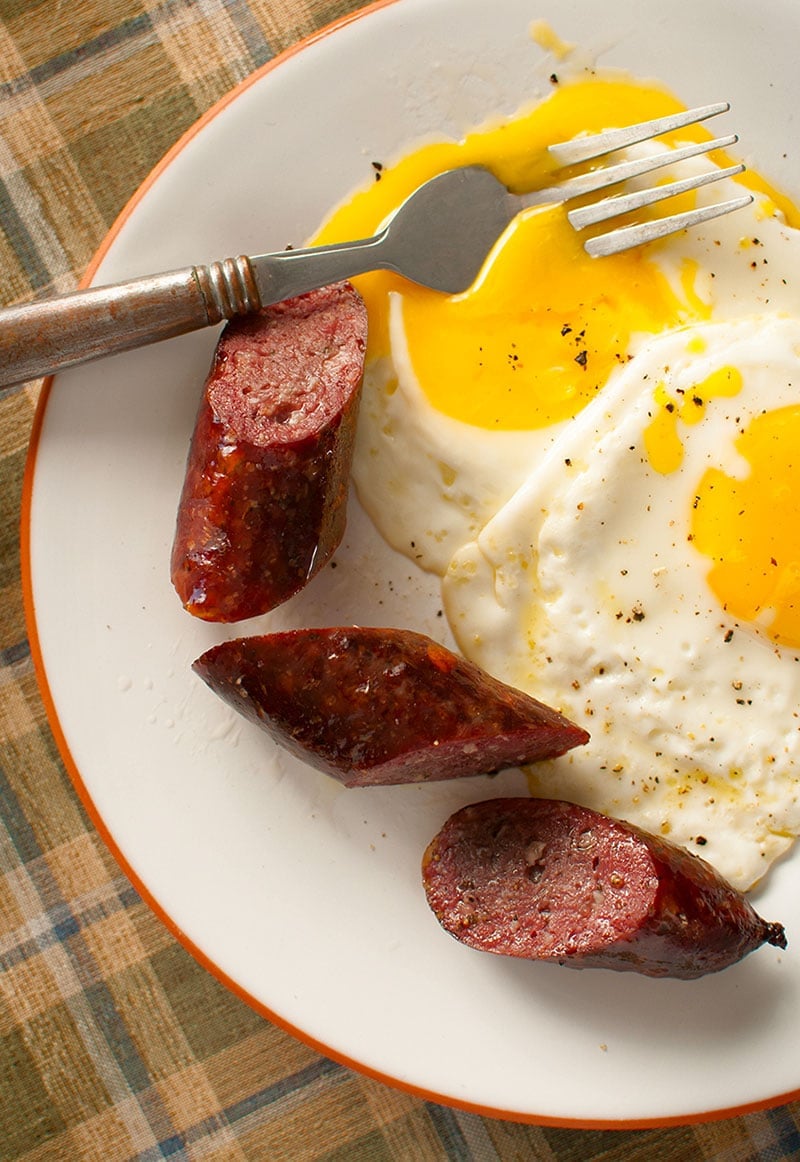
We would eat it instead of bacon with eggs and toast in the morning; hell, Frank would often just lop off a couple inches right from the fridge and eat it as a snack — it is fully cooked, after all.
Frank is long gone. He died in 2001. But every time I eat a link of kielbasa for breakfast, I think of him.
Polska Kielbasa
Ingredients
- 4 pounds pork, wild pig, bear, venison, etc
- 1 pound pork fat (fatback or shoulder fat)
- 36 grams kosher salt, about 2 tablespoons
- 5 grams Instacure No. 1, about 1 teaspoon
- 5 grams ground black pepper, about 2 teaspoons
- 1 gram dried marjoram, about 2 teaspoons
- 10 grams sugar, about 2 teaspoons
- 6 garlic cloves, minced
- 1/2 cup ice water
- Hog casings
Instructions
- Chill the meat and fat until they is almost frozen by putting it in the freezer for an hour or so. Take out some hog casings — you’ll need about 3 to 4 standard lengths, about 10 feet — and set in a bowl of very warm water to rehydrate.
- Chop meat and fat into 1-inch pieces. Combine the salt, instacure, sugar, garlic, marjoram and pepper and mix it into the meat and fat with your hands. Let this rest in the fridge for about an hour.
- Grind through your meat grinder (you can use a food processor in a pinch, but you will not get a fine texture) using the fine die. If your room is warmer than 65°F, set the bowl for the ground meat into another bowl of ice to keep it cold. Put the meat mixture back in the freezer while you clean up.
- Add the ice water to the meat mix, then mix thoroughly either using a Kitchenaid on low for 90 seconds or with your (very clean) hands. This is important to get the sausage to bind properly. Once it is mixed well, put it back in the fridge while you clean up again.
- Stuff the sausage into the casings. Kielbasa is normally made into long links tied at both ends to form a loop. Stuff about 2 feet of sausage, then pinch off the trailing end and pull off at least 6 inches of casing from the stuffing tube. Cut the casing with a knife and immediately pull out another 6 inches or so of casing to form the loose end for the next long loop of sausage. This ensures that you will have enough casing to tie off the links. Leave the links untied for now.
- Check each long link of kielbasa for air pockets. You will probably have some. Use a sterilized needle (get the point glowing in the stove burner for a second or so to do this) and pierce the casing all around any air pockets. Gently compress the meat in the link from either end. Don't force it or the casing will burst. When you see no more air pockets, tie off the casings at either end.
- Hang the sausages in a cool place. If it is warm out, hang for one hour. If you have a place where the temperature will not go higher than 38°F, you can hang them as long as overnight.
- Get your smoker going. Smoke the links for at least 4 hours, and as many as 8. I prefer a lighter smoke, so you can still taste the meat and spices. You are looking to get the internal temperature of the links to 155°F. When the kielbasa is smoked, shock the links in ice water to cool quickly.
- Hang them to dry for at least 1 hour before eating, and if you have a cool place (55°F or cooler) you can hang for up to 4 days.
Notes
Nutrition
Nutrition information is automatically calculated, so should only be used as an approximation.

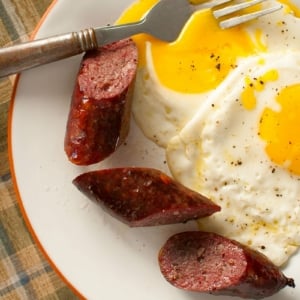
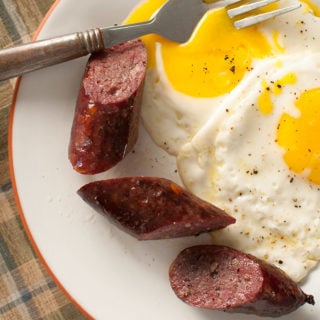



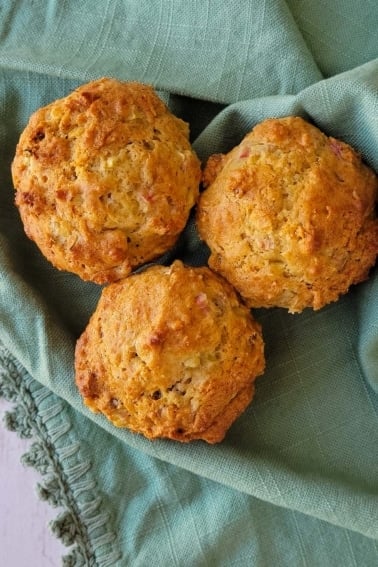
made this recipe today added 2table spoons crushed red pepper to 6 lbs pork
heavy smoke 4 hrs cold
made 18 8 inch links straight
hot today in Texas 95° so after smoke boiled till done let cool ate 1 absolutely fantastic
have to make lots more thank you for recipe
Thanks Hank!
Your Kielbasa recipe seems to be what the doctor ordered.
I’ve read several recipes, without a lot of variations on ingredients, but I think you’re spot on.
I enjoyed your humor and am jealous, because I work a 14 hour day, and it seems there’s never any time to fish and hunt, so go do it for both of us… Hoghest regards, JosephMack King, Jr. From the Plant City area of Florida.
Can I use bacon to ad fat content ?
Robert: I would not in this case. It’s better to use fatty pork shoulder or straight pork fat.
Hi Hank, Have enjoyed your segments on Meateater with Steve. Getting a 1/2 dozen cloves minced finely enough to disperse evenly with 5 lbs of meat is a challenge. Have you experimented with granulated garlic? I don’t cook with it, but do use it in brines/rubs.
You can always grate the garlic.
Possibly a silly question; Can one use lard instead of fat? I rendered all the pork fat we got from our hog into lard.
Thanks!
Veronica. No. Sorry. Once it’s rendered, fat is useless for sausage making.
Hank, I was going to try to make some kielbasa adding diced cooked beef tounge to the mix for some varied texture. If I do this, do I count the weight of the cooked tounge to the cure #1 calculation,or only the raw meat weight?
Edwin: The cooked tongue counts, so include it in the calculation.
This is my favorite recipe. The only thing I do differently is 1/4 beef and a little mustard powder. It’s people like you that make my family and friends think I’m a good cook. I love using this sausage in my chicken sausage gumbo.
Hi Hank,
I made 10 pounds of the sausage “mixture’ and am now ready to stuff the casings. I just realized that I only added 1 oz of the cure #1.
Is it safe to cold smoke? What temperature?
If not, what are my options at this point?
Also, is it too later to add additional spices?
Thanks! This is my first time making sausage and I don’t want to send anyone to the hospital!!! ;-))
Margaret: You should be fine. It might be a little less rosy red than you want, but it should be perfectly safe. And are you cold smoking or hot smoking? I hot smoke this sausage at about 200F until the meat hits about 165F internal, then shock them in an ice water bath to stop any carryover cooking. Pat dry and refrigerate.
Excellent! Thanks so much!!
Hey Hank just wanted to say great job on this one! Made it for my polish family on Easter (some of whom aren’t even kielbasa eaters). And also aren’t game eaters, although I only used a 1lb of Venison and the rest pork/ pork fat (shh didn’t tell them it had any Venison). Everyone loved it and it will be a new Easter tradition!
If I want to double or triple this recipe should I do the same with the spices? Or something along the lines of 1.5x the spices?
Dave: Yes, a double batch will be double all the ingredients.
Can the instacure be omitted?
Kathy: Definitely if you don’t plan on smoking your kielbasa, but it is needed for the traditional smoked sausage.
Dear Hank,
I’m a big fan of your website and recipes. Love you sweet Italian sausage recipe and your kielbasa is spot on, especially regarding spices – marjoram, garlic and black pepper are true staples, but you can also find coriander seeds, white pepper and nutmeg in some traditional sorts. What’s quite important in Polish sausages is so called classification of meat (I do not know the exact English term), often used also by amateurs, which means cutting and dividing meats in at least three categories (and curing for 48h separately before grinding): no. 1 – lean meat chunks (pure muscle, no fat except minor marbling) are ground coarsely or just cubed with a knife; no. 2 – fatter chunks with no tendons or connective tissue are ground mid-coarse; no. 3. – fatter chunks with some connective tissue and tendons – these are ground very finely with ice cold water as it is a perfect binder. This applies mostly to pork as any beef additions are usually ground very finely and added to the 3rd category.
Just my 5 cents as a Polish sausage making enthusiast.
Keep up the good work!
Peter
This has become a staple in my house with 2 picky kids . 5 stars!
Hi just curious if I can successfully smoke the Polish sausages you hacve the recipe for at above 140 degrees without melting the fat etc?
I am looking at an electric smoker for this task and it appears it only goes down to 165 degrees. Your expert advice would be welcome. Thanks
Gavin: Yes, 165F will work, even 200F. You want the internal temperature of the links to get to about 155F.
Thanks for that Hank. Sadly yesterday I hung my made links in the smoker ( electric Masterbuit) and set the temp probe to about 155. I noticed the chips werent smoking but didnt want to increase the heat too much for fear of melting the fat…. Well after 4 hours of being very cautious about keeping heat down, I hauled the Kielbasa out and saw two problems 1 they hadnt smoked! and two the fat had definitely melted and after the ice water shock they were wrinkle and awful !!!! (Taste was great but the rest a disaster. Very sad because I have done this about 5 or 6 times and they were excellent, well smoked , not melted fat. My question, can I load the links into the smoker and set the heat way up ( around 200) to initially get the chips to burn? or throw the chips out for new pack? Or what? This didnt happen the last few times I just set the heat and kept it around 150 degrees…. Help 🙂
Gavin: Yes, you can do that with the temperature. Another trick to limit or eliminate the wrinkling is to plunge the finished sausages into an ice water bath to cool quickly. That helps a lot.
The best polish kielbasa I’ve ever made. It’s perfect as it is
Delicious with venison and pork. My wife, who is from Poland, approved.
I vacuum seal my sausages, and learned early on to put them in the freezer to solidify/ partly frozen, before sealing. This way they keep their shape, and do not squeeze out. Also, when preparing the sausage, grinding, mixing, stuffing, I have a dishpan of warm soapy water to wash my hands in because I always seem to forget something or other, and this keeps my kitchen taps cleaner.
When Making your recipes do you recommend using the grams weight rather than the American measuring system? I just mixed up a 10# batch of your Polish Kielbasa. While measuring and doubling your recipe it appears that the American measurements are all over the place. I did mix my gram weight so hopefully that will produce the desired or developed recipe yo set out to make.
Only 1 gram of marjoram though?
I appreciate your help!
Michael: Yes, the gram measurements are the most accurate.
Hank, when you specify pork fat in your recipes, is it pure fat?
I’ve come across other sausage recipes which have specified 60/40 venison/ pork mixture, but I think that these other recipes are using fatty cuts of pork like a shoulder.
Great recipes by the way! I’ve made your Wisconsin red brats and kabanosy so far. Going to try out this kielbasa this weekend.
Luc: Yes, in this case pure fat.
thanks for all the words. Love your site — once was a time in NYC that someone would make the sausage for Easter… great stuff. As you said — many kinds of this sausage —
Being retired Military we did get the chance to visit Poland. Went to local Supermarket – asked for Polish Sausage — The butcher said “We have 26 kinds, which one do you want?” Will send the recipe info to friend in MS …they do a lot of wild pig sausage ..could turn out to be a winner –As well as a change for them
Hank. What would be the reason my lem casing broke will smoking?
Mike: Not sure. Maybe the heat got too high?